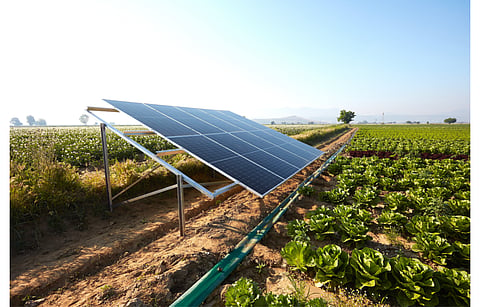

Using cost-effective solar pumps for irrigation in Sub-Saharan Africa (SSA) can help boost food production and improve nutrition for local populace, while meeting other energy needs aligned with the Sustainable Development Goal (SDG) 7, according to a new study led by Austria's International Institute for Applied Systems Analysis (IIASA).
With smallholder farmers responsible for 80% of agricultural production in SSA and with 90% of all cropland dependent on rain which is unpredictable, the region faces low productivity and food insecurity. Study authors also point to the low degree of mechanization that reinforces the persistent poverty trap.
In this context, the team developed an open-source modeling framework to:
According to their results, standalone solar PV irrigation systems can help with over 1/3rd of unmet crop water requirements of 19 major crops in smallholder rainfed cropland of the region, basing their work on a spatially explicit integrated modelling framework.
They claim to identify 10 million ha with a profit potential of over $100/ha/yr.
"We estimate an average discounted investment requirement of $3 billion per year, generating potential profits of over $5 billion per year from increased yields to smallholder farmers, as well as significant food security and energy access co-benefits," said Lead Author of the study and a Researcher in the Integrated Assessment and Climate Change Research Group of the IIASA Energy, Climate, and Environment Program, Giacomo Falchetta.
It presents itself as an opportunity for public and private stakeholders for targeted investments along the water-energy-food-economy-sustainable development nexus.
What's important to consider here is the financial means for farmers to be able to make an investment in the technology, which is where a well-thought-out business plan needs to come in.
"Using a business model that spreads out all initial expenses more than doubles the number of workable solar irrigation systems, presenting a huge potential to achieving the SDGs in the process," notes IIASA Transformative Institutional and Social Solutions Research Group Leader Shonali Pachauri.
Authors further caution, "Yet, we estimate that without strong land and water resources management infrastructure and governance, a widespread deployment of solar pumps may drive an unsustainable exploitation of water sources and reduce environmental flows."
Conducted as part of the research project Renewables for African Agriculture (RE4AFAGRI), the study was published in Environmental Research Letters under the title Solar irrigation in sub-Saharan Africa: economic feasibility and development potential.
.png?w=50&fm=png)